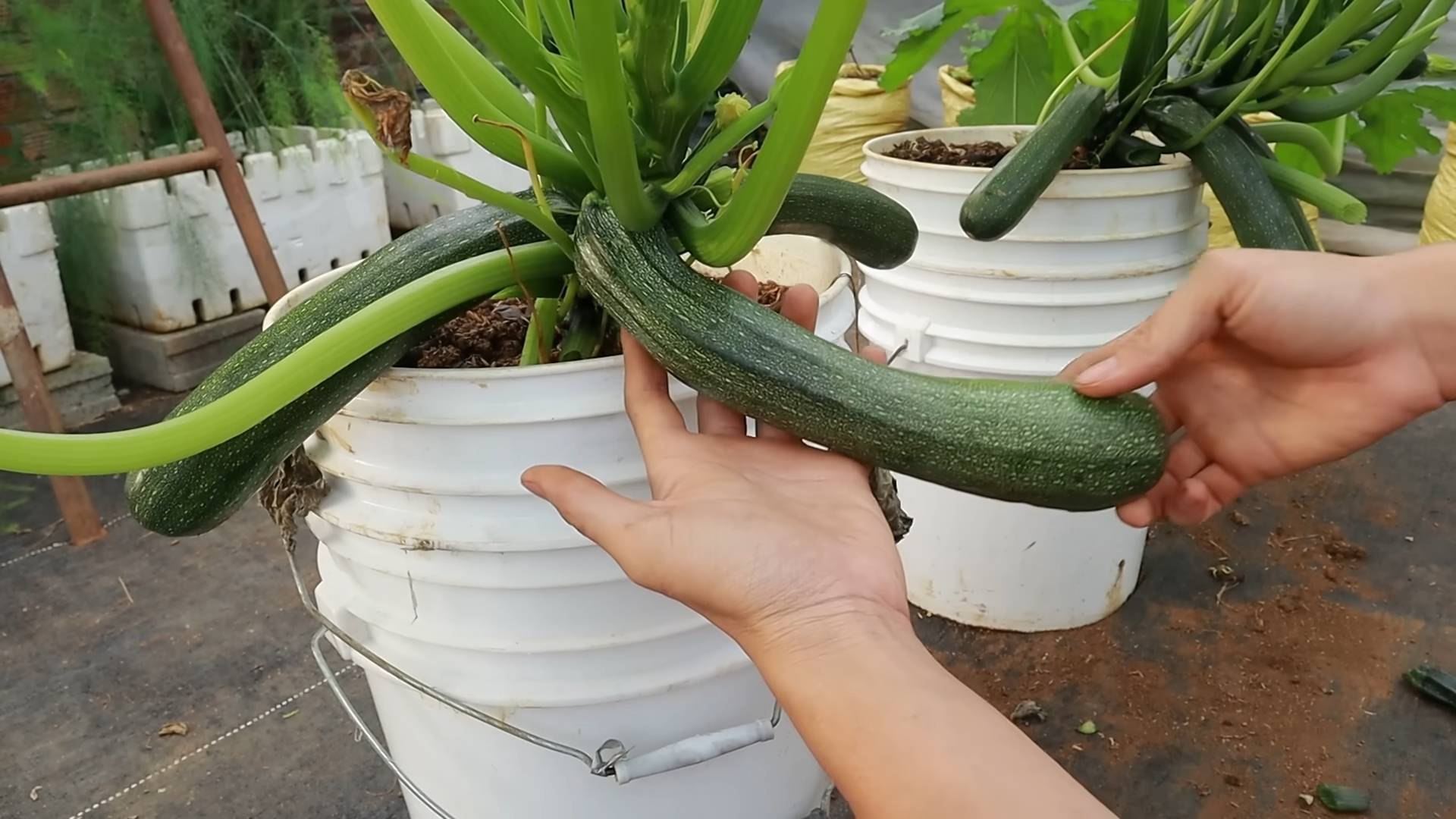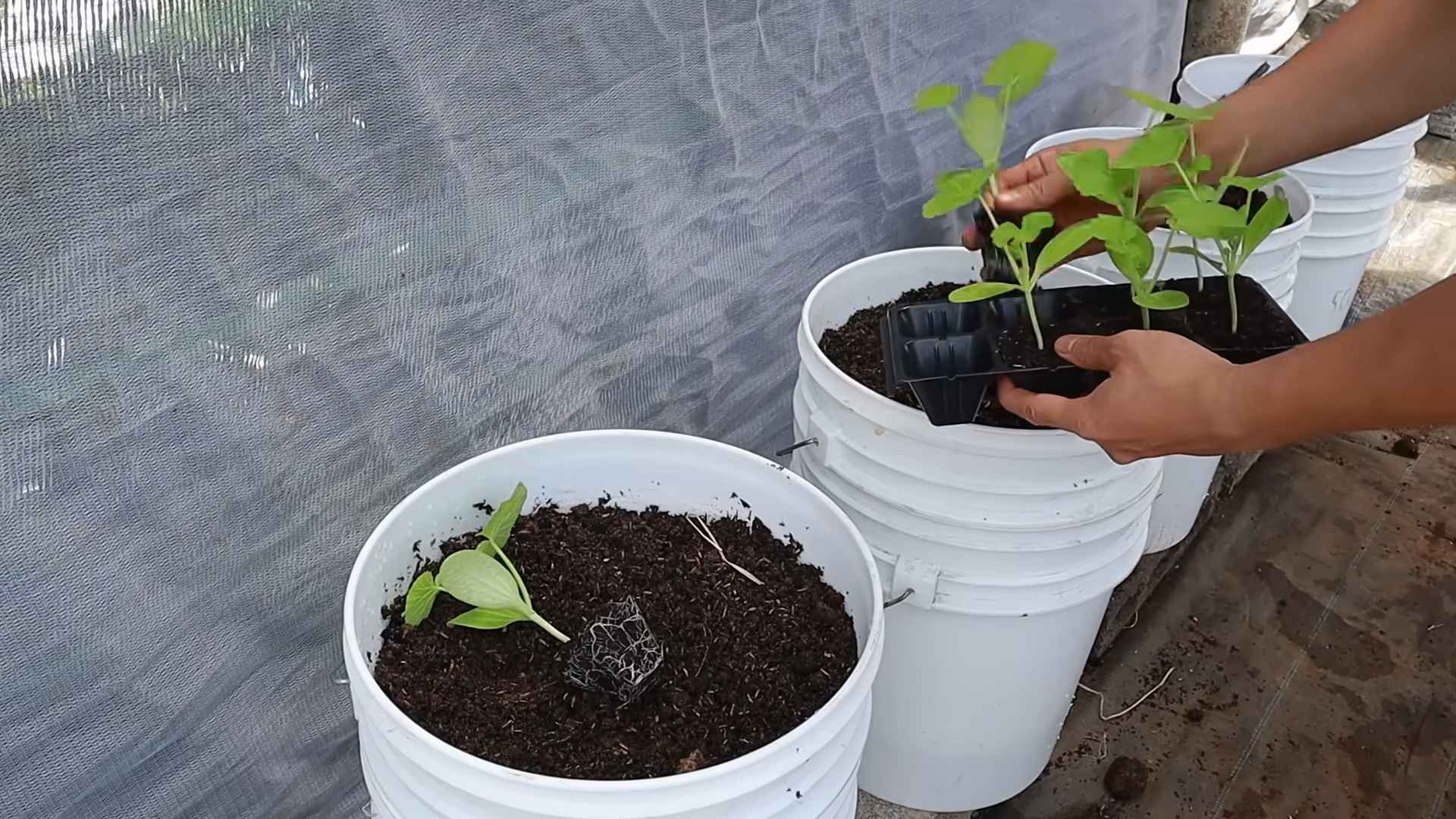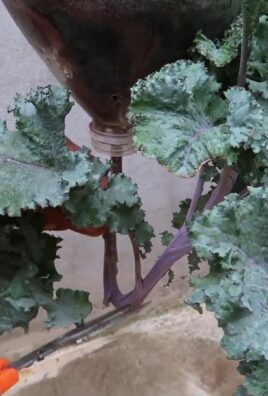Grow Zucchini Indoors Easily? Absolutely! Imagine harvesting fresh, vibrant zucchini right from your living room, even when the snow is falling outside. Forget those pricey grocery store vegetables – with a few simple tricks, you can cultivate your own little zucchini paradise indoors.
For centuries, humans have sought ways to extend the growing season, from ancient Roman greenhouses to the ingenious cold frames of Victorian England. This desire to nurture life, regardless of the weather, is deeply ingrained in our history. Now, with modern technology and a dash of DIY spirit, bringing the garden indoors is easier than ever.
Why should you learn to grow zucchini indoors easily? Well, for starters, you gain complete control over the growing environment, shielding your precious plants from pests, diseases, and unpredictable weather. Plus, there’s nothing quite like the satisfaction of nurturing a plant from seed to harvest. In this article, I’ll share my favorite DIY tricks and hacks to help you successfully grow zucchini indoors, regardless of your experience level. Get ready to unleash your inner gardener and enjoy a bountiful harvest all year round!

Grow Zucchini Indoors: A Beginner’s Guide
Hey there, fellow gardening enthusiasts! Ever dreamt of harvesting fresh zucchini even when the weather outside is frightful? Well, dream no more! I’m going to walk you through the surprisingly simple process of growing zucchini indoors. Trust me, with a little patience and the right setup, you can enjoy homegrown zucchini year-round. Let’s get started!
Choosing the Right Zucchini Variety
Not all zucchini varieties are created equal, especially when it comes to indoor growing. We need to pick varieties that are more compact and bush-like, rather than the sprawling vine types.
* Bush Varieties: These are your best bet. Look for names like ‘Spacemiser,’ ‘Bush Baby,’ ‘Astia,’ or ‘Patio Star.’ These are bred to stay relatively small, making them perfect for containers.
* Avoid Vine Varieties: Steer clear of varieties like ‘Black Beauty’ or ‘Costata Romanesco’ unless you have a *huge* indoor space and are prepared to provide extensive support. They can get unruly!
Setting Up Your Indoor Zucchini Garden
Okay, now that we’ve chosen our zucchini champion, let’s create the perfect indoor environment.
* Light is Key: Zucchini needs a LOT of light – at least 6-8 hours of direct sunlight per day. If you don’t have a sunny south-facing window, you’ll absolutely need grow lights.
* Container Size Matters: Zucchini plants have surprisingly robust root systems. You’ll need a large container, at least 15-20 gallons in size. A fabric pot is a great option because it allows for good drainage and air pruning of the roots.
* Well-Draining Soil: Use a high-quality potting mix that drains well. You can amend it with compost or perlite to improve drainage and aeration.
* Temperature Control: Zucchini thrives in temperatures between 65-75°F (18-24°C). Avoid placing your plants near drafty windows or heating vents.
* Pollination Assistance: This is crucial for indoor zucchini growing. Since there are no bees or other pollinators buzzing around, you’ll need to hand-pollinate your plants. Don’t worry, I’ll show you how!
Step-by-Step Planting Guide
Alright, let’s get our hands dirty!
1. Prepare Your Container: Fill your chosen container with the well-draining potting mix, leaving about an inch or two of space at the top.
2. Sow the Seeds: Plant 2-3 zucchini seeds about an inch deep in the center of the container.
3. Water Gently: Water the soil thoroughly but gently, making sure not to dislodge the seeds.
4. Provide Warmth: Zucchini seeds germinate best in warm soil. You can use a heat mat underneath the container to speed up the process.
5. Wait Patiently: Germination usually takes 5-10 days. Keep the soil consistently moist but not waterlogged.
6. Thin the Seedlings: Once the seedlings emerge and have a few true leaves, thin them to one strong, healthy plant per container. Snip off the weaker seedlings at the soil line rather than pulling them out, to avoid disturbing the roots of the remaining plant.
Caring for Your Indoor Zucchini Plant
Now that your zucchini plant is growing, it’s time to provide the care it needs to thrive.
1. Watering: Water deeply whenever the top inch of soil feels dry to the touch. Avoid overwatering, as this can lead to root rot.
2. Fertilizing: Zucchini plants are heavy feeders. Fertilize every 2-3 weeks with a balanced liquid fertilizer, following the instructions on the label. You can also use a fertilizer specifically formulated for vegetables.
3. Light Management: If you’re using grow lights, position them about 6-12 inches above the plant. Adjust the height as the plant grows. Aim for 14-16 hours of light per day.
4. Pruning: Remove any yellowing or dead leaves to improve air circulation and prevent disease.
5. Pest Control: Keep an eye out for common pests like aphids, spider mites, and whiteflies. If you spot any, treat them with insecticidal soap or neem oil.
6. Support: As your zucchini plant grows, it may need some support. You can use a tomato cage or stakes to keep the plant upright and prevent the fruits from touching the soil.
Hand-Pollination: The Key to Indoor Zucchini Success
This is where things get a little hands-on, but don’t worry, it’s easier than it sounds! Zucchini plants have separate male and female flowers. The male flowers have a long, thin stem, while the female flowers have a small zucchini fruit developing at the base.
1. Identify Male and Female Flowers: This is the first step! Look for the telltale signs mentioned above.
2. Timing is Everything: Pollinate in the morning, when the flowers are fully open.
3. Gather Pollen: Gently pluck a male flower. Remove the petals to expose the stamen, which is covered in pollen.
4. Transfer Pollen: Gently rub the stamen of the male flower onto the stigma (the sticky part) of the female flower. You can also use a small paintbrush to transfer the pollen.
5. Mark the Pollinated Flower: Use a piece of yarn or ribbon to mark the pollinated flower. This will help you keep track of which flowers you’ve already pollinated.
6. Repeat Daily: Continue hand-pollinating every day until you see the zucchini fruits start to develop.
Troubleshooting Pollination Problems:
* Not enough male flowers: If you don’t have enough male flowers, you can try collecting pollen from multiple male flowers and using it to pollinate one female flower.
* Female flowers are dropping off: This could be a sign of poor pollination or nutrient deficiency. Make sure you’re hand-pollinating properly and fertilizing regularly.
* High Temperatures: Extreme heat can affect pollen viability. Try pollinating early in the morning when it’s cooler.
Harvesting Your Homegrown Zucchini
The moment we’ve all been waiting for! Zucchini is typically ready to harvest about 50-60 days after planting.
* Harvest When Young: Harvest your zucchini when it’s about 6-8 inches long. Smaller zucchini are more tender and flavorful.
* Use a Sharp Knife: Cut the zucchini from the plant with a sharp knife, leaving about an inch of stem attached.
* Regular Harvesting Encourages Production: The more you harvest, the more zucchini your plant will produce!
Dealing with Common Problems
Even with the best care, you might encounter some challenges along the way. Here are a few common problems and how to address them:
* Powdery Mildew: This fungal disease appears as a white, powdery coating on the leaves. Improve air circulation, avoid overhead watering, and treat with a fungicide if necessary.
* Blossom End Rot: This is caused by a calcium deficiency and results in a dark, sunken spot on the blossom end of the zucchini. Ensure consistent watering and fertilize with a calcium-rich fertilizer.
* Aphids: These tiny pests suck the sap from the leaves, causing them to curl and yellow. Wash them off with a strong stream of water or treat with insecticidal soap.
* Squash Vine Borers: While less common indoors, these pests can tunnel into the stems of zucchini plants. Look for signs of wilting or holes in the stems. If you suspect squash vine borers, you can try injecting Bacillus thuringiensis (Bt) into the stems.
Enjoying Your Harvest
Congratulations! You’ve successfully grown zucchini indoors! Now it’s time to enjoy the fruits (or rather, vegetables) of your labor. Zucchini is incredibly versatile and can be used in a variety of dishes, from zucchini bread and muffins to stir-fries and salads. Get creative and experiment with different recipes!
Growing zucchini indoors can be a rewarding experience. With a little planning and effort, you can enjoy fresh, homegrown zucchini year-round. Happy gardening!

Conclusion
So, there you have it! Growing zucchini indoors might seem like a challenge, but with a little planning and these simple steps, you can enjoy fresh, homegrown zucchini even when the weather outside isn’t cooperating. This DIY trick is a must-try for several reasons. First, it extends your growing season, allowing you to harvest zucchini earlier and later than you would outdoors. Second, it gives you greater control over the growing environment, protecting your plants from pests, diseases, and unpredictable weather. Third, and perhaps most importantly, it’s incredibly rewarding to nurture a plant from seed to harvest, especially when you get to enjoy the delicious fruits (or rather, vegetables!) of your labor.
But don’t stop there! Experiment with different zucchini varieties to find your favorites. Try growing compact bush varieties like ‘Spacemiser’ or ‘Bush Baby’ if you’re limited on space. You can also explore different growing mediums, such as coco coir or perlite, to see which works best for your setup. Consider adding companion plants like marigolds or basil to your indoor garden to deter pests and attract pollinators.
Remember, successful indoor gardening is all about observation and adaptation. Pay close attention to your plants’ needs and adjust your watering, lighting, and fertilization accordingly. Don’t be afraid to experiment and learn from your mistakes. Every gardener, even experienced ones, faces challenges along the way. The key is to persevere and enjoy the process.
We’re confident that you’ll find this DIY trick for growing zucchini indoors to be a game-changer. Imagine the possibilities: fresh zucchini bread in the middle of winter, grilled zucchini on a rainy spring day, or simply the satisfaction of knowing you grew your own food from scratch.
Now it’s your turn! We encourage you to give this method a try and share your experience with us. Let us know what worked well for you, what challenges you faced, and any tips or tricks you discovered along the way. Your feedback will help us improve this guide and inspire other gardeners to embark on their own indoor zucchini-growing adventures. Share your photos and stories in the comments below – we can’t wait to see your thriving indoor zucchini plants! Embrace the joy of indoor gardening and discover the delicious rewards of growing zucchini indoors easily.
Frequently Asked Questions (FAQ)
1. What is the best time to start growing zucchini indoors?
The best time to start growing zucchini indoors depends on your local climate and when you want to harvest your zucchini. Generally, you should start your seeds about 4-6 weeks before the last expected frost date in your area. This will give your seedlings a head start and allow you to transplant them outdoors (if desired) or continue growing them indoors once the weather warms up. If you plan to grow zucchini entirely indoors, you can start your seeds at any time of year, provided you have adequate lighting and temperature control. Consider staggering your planting times to ensure a continuous harvest throughout the year.
2. What type of lighting is required for growing zucchini indoors?
Zucchini plants need plenty of light to thrive, ideally 6-8 hours of direct sunlight per day. However, if you’re growing zucchini indoors, you’ll likely need to supplement natural light with artificial lighting. LED grow lights are an excellent option because they are energy-efficient and provide the full spectrum of light that plants need for photosynthesis. Fluorescent grow lights are another option, but they may not be as efficient as LEDs. When choosing grow lights, look for ones that are specifically designed for plants and provide a sufficient amount of light for the size of your growing area. Position the lights close enough to the plants to provide adequate illumination, but not so close that they burn the leaves.
3. How often should I water my indoor zucchini plants?
Watering frequency depends on several factors, including the size of your pot, the type of growing medium, and the temperature and humidity of your environment. As a general rule, you should water your zucchini plants when the top inch of soil feels dry to the touch. Water deeply, ensuring that the water drains out of the bottom of the pot. Avoid overwatering, as this can lead to root rot. During hot weather or when the plants are actively growing, you may need to water more frequently. Check the soil moisture regularly and adjust your watering schedule accordingly.
4. What type of fertilizer should I use for my indoor zucchini plants?
Zucchini plants are heavy feeders and require regular fertilization to produce abundant fruit. Use a balanced fertilizer with an NPK ratio (nitrogen, phosphorus, potassium) of 10-10-10 or 14-14-14. You can also use a fertilizer specifically formulated for vegetables. Start fertilizing your plants when they are about 2-3 weeks old and continue fertilizing every 2-3 weeks throughout the growing season. Follow the instructions on the fertilizer package carefully to avoid over-fertilizing, which can damage your plants. You can also supplement with organic fertilizers like compost tea or fish emulsion.
5. How do I pollinate my zucchini flowers indoors?
Zucchini plants have separate male and female flowers. In order to produce fruit, the female flowers must be pollinated with pollen from the male flowers. Outdoors, this is typically done by bees and other insects. However, indoors, you’ll need to hand-pollinate your zucchini flowers. To do this, use a small paintbrush or cotton swab to collect pollen from the male flower and transfer it to the stigma of the female flower. The female flower can be identified by the small zucchini fruit at the base of the flower. Pollinate your flowers in the morning, when the pollen is most viable. You may need to pollinate several flowers to ensure a good fruit set.
6. What are some common pests and diseases that affect indoor zucchini plants?
While growing zucchini indoors can help reduce the risk of pests and diseases, your plants can still be susceptible to certain problems. Common pests include aphids, spider mites, and whiteflies. These pests can be controlled with insecticidal soap, neem oil, or by introducing beneficial insects like ladybugs. Common diseases include powdery mildew and root rot. Powdery mildew can be prevented by providing good air circulation and avoiding overhead watering. Root rot can be prevented by avoiding overwatering and using a well-draining growing medium. Regularly inspect your plants for signs of pests or diseases and take action promptly to prevent them from spreading.
7. How long does it take for zucchini to mature and be ready for harvest?
Zucchini typically matures and is ready for harvest about 50-65 days after planting. The exact time will depend on the variety of zucchini and the growing conditions. Harvest your zucchini when it is about 6-8 inches long and the skin is still tender. Use a sharp knife to cut the zucchini from the plant, leaving a short stem attached. Regular harvesting will encourage the plant to produce more fruit. Overripe zucchini can become tough and seedy, so it’s important to harvest them at the right time.
8. Can I grow zucchini in a container? What size container is needed?
Yes, you can definitely grow zucchini in a container! Choose a container that is at least 15-20 gallons in size to provide enough room for the roots to grow. Make sure the container has drainage holes to prevent waterlogging. Use a high-quality potting mix that is well-draining and rich in nutrients. Bush varieties of zucchini are better suited for container growing than vining varieties. Provide adequate support for the plant as it grows, such as a stake or trellis.
9. My zucchini plant is producing flowers but no fruit. What could be the problem?
There are several reasons why your zucchini plant might be producing flowers but no fruit. One common reason is lack of pollination. As mentioned earlier, you’ll need to hand-pollinate your zucchini flowers indoors. Another reason could be nutrient deficiencies. Make sure you are fertilizing your plants regularly with a balanced fertilizer. Stressful growing conditions, such as extreme temperatures or lack of water, can also prevent fruit set. Ensure that your plants are receiving adequate light, water, and nutrients, and that the temperature is within the optimal range for zucchini growth.
10. Can I save seeds from my indoor-grown zucchini for future planting?
Yes, you can save seeds from your indoor-grown zucchini for future planting, but there are a few things to keep in mind. If you grew a hybrid variety of zucchini, the seeds may not produce plants that are true to type. This means that the offspring may not have the same characteristics as the parent plant. Open-pollinated varieties are more likely to produce true-to-type offspring. To save seeds, allow a zucchini fruit to mature fully on the plant until it is very large and the skin is hard. Remove the seeds from the fruit, rinse them thoroughly, and dry them completely before storing them in an airtight container in a cool, dark place.




Leave a Comment